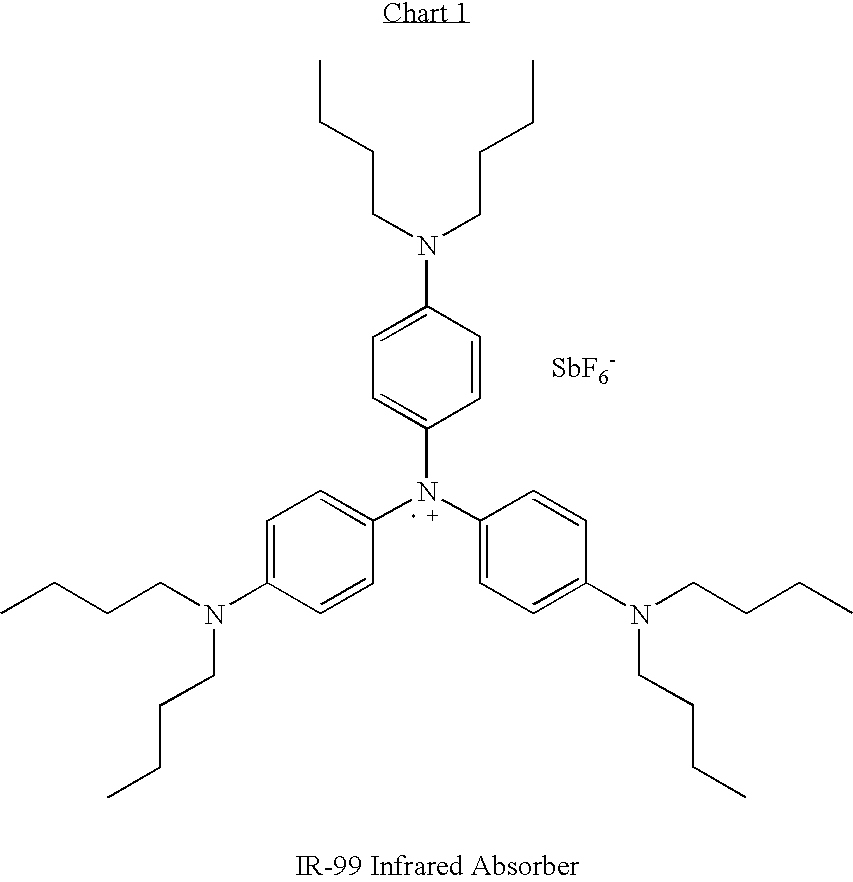Organic photovoltaic cells
a photovoltaic cell, organic technology, applied in the direction of photovoltaic energy generation, electrical equipment, semiconductor devices, etc., can solve the problems of high cost design and limited rigidity
- Summary
- Abstract
- Description
- Claims
- Application Information
AI Technical Summary
Benefits of technology
Problems solved by technology
Method used
Image
Examples
Embodiment Construction
[0015] The photovoltaic cells of the present invention provide capture of the sun's energy across a wide range of wavelengths, particularly including wavelengths in the near infrared region above 800 nm and higher.
Organic Free Radical Compounds
[0016] The term “organic free radical compound,” as used herein, pertains to an organic compound which comprises at least one free unpaired electron on an atom, such as, for example, a carbon atom, a nitrogen atom, or an oxygen atom, in the ground state of the organic compound. Suitable organic free radical compounds for the photovoltaic cells and other optical devices of the present invention include neutral organic free radicals, salts of organic free radical cations, and salts of organic free radical anions. For purposes of brevity, the terms “organic free radical compound” and “organic radical compound” are used interchangeably herein. For purposes of brevity, the terms “organic free radical cation,”“organic radical cation,” and “radica...
PUM
 Login to View More
Login to View More Abstract
Description
Claims
Application Information
 Login to View More
Login to View More - R&D
- Intellectual Property
- Life Sciences
- Materials
- Tech Scout
- Unparalleled Data Quality
- Higher Quality Content
- 60% Fewer Hallucinations
Browse by: Latest US Patents, China's latest patents, Technical Efficacy Thesaurus, Application Domain, Technology Topic, Popular Technical Reports.
© 2025 PatSnap. All rights reserved.Legal|Privacy policy|Modern Slavery Act Transparency Statement|Sitemap|About US| Contact US: help@patsnap.com

